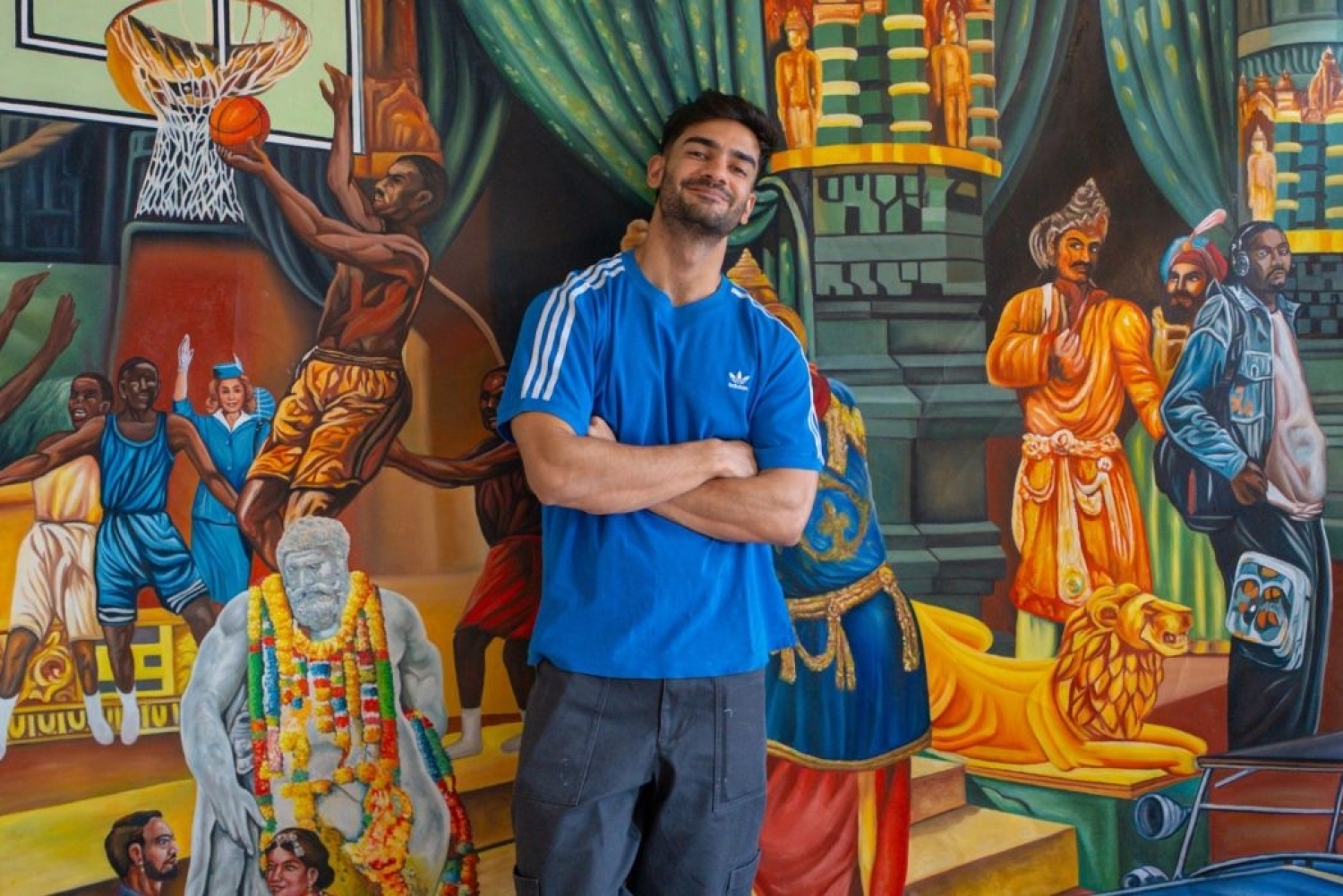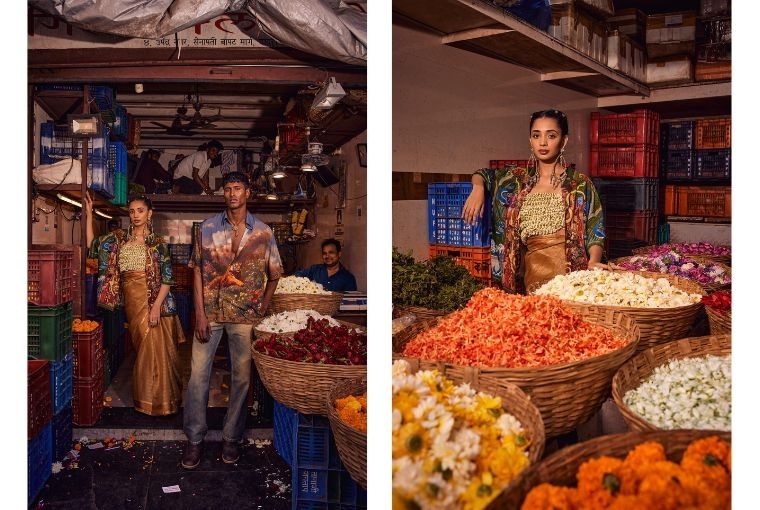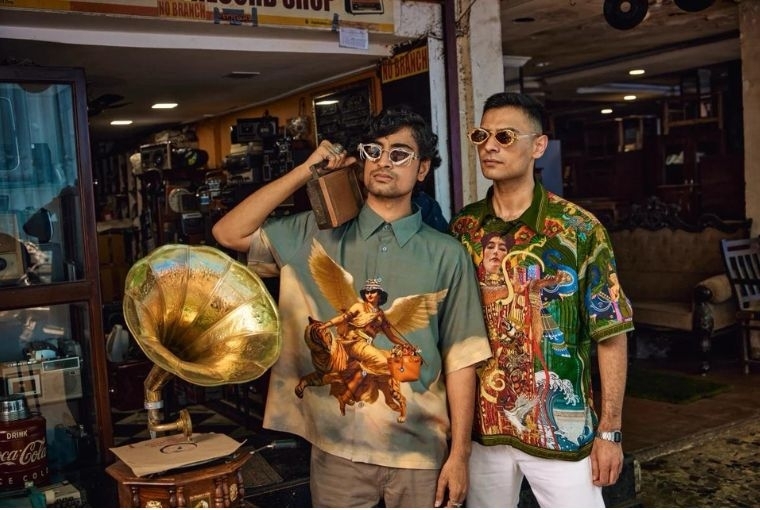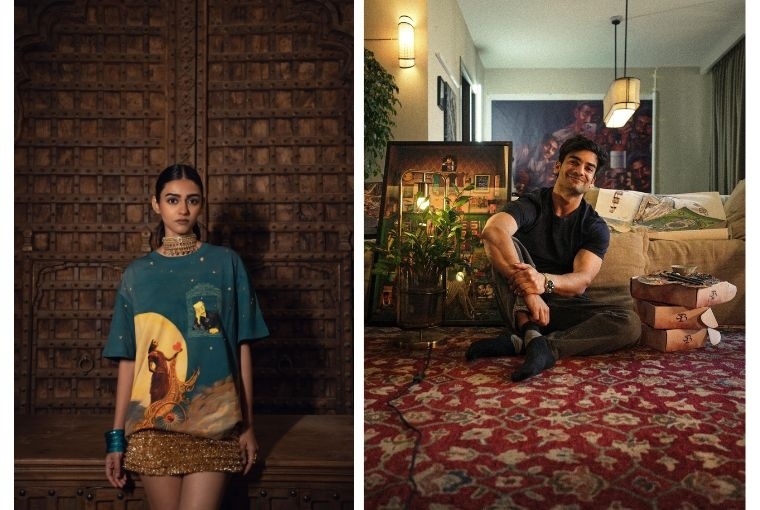

When you talk to Abhay Sehgal, you’re talking with someone who’s constantly pushing at the edges of his curiosity. A graduate of the School of the Art Institute of Chicago, Abhay is known for his surrealist interpretations of Indian culture, blending psychology, pop art, mythology, and everyday observations into work that feels both deeply personal and strikingly universal. His art has taken him from fine art to high-profile collaborations with brands like Prada and Coca-Cola, to launching his fashion label, CODE BRWN, all while building a strong following on social media.
There’s a sharpness to the way Abhay talks, an intensity that flickers between excitement and impatience, as if he’s already halfway into his next idea while explaining the last. For him, art is the only language he knows to process life, turn observation into meaning, and wrestle with the chaos of being alive. What’s striking is that none of it feels packaged or overly polished. His paintings, clothes, and online presence are all driven by the same internal engine: a restless creative energy that refuses to stay in one lane. Abhay doesn’t just want to make things; he wants to shake up how they exist, how they’re seen, and how they connect to people on a visceral level.
Beginnings and Romance with Art
I never thought I’d pursue art. I always imagined I’d either go into the military or do something creative but practical, maybe an agency or graphic design. Back in 2014-15, graphic design was huge. Coming from a business family, you start thinking logically: will you be able to match up, will you cover your expenses, or will you just be struggling?
But then I went to the School of the Art Institute of Chicago, and that changed things. The college wasn’t locked into one route — you could pick anything and explore across four years. So I experimented: fine arts, graphic design, animation, VFX. And the funniest part is, it was only after college that I realized I wanted to be an artist. Before that, I was thinking, okay, let me work towards Marvel or Disney, like every young artist dreams.
Then COVID hit, and I was stuck in Chicago. I had time to think, to work on my own. And I realized, I want to sell what I make, not what someone else tells me to make. That’s when it clicked. At first, my family was like — Are you serious? But my mom and dad have always been supportive. Even if relatives had doubts, it didn’t matter. They gave me a hand to push things forward. Of course, fathers will be fathers — they ask the tough questions, they push you harder. But honestly, that became a trigger point for me, made me work even harder.

Finding Style and Fueling Creativity
After a few years, you find your art style, and that becomes your thing. I started with surrealism, and once I moved back to India, I felt something was missing — that authenticity. So I began blending surrealism with Indian roots, then moved towards pop art. It became this hybrid style, combining different things, and that stuck.
People often say, ‘It’s so intricate, so detailed, wow,’ but what I love most is when someone tries to make their meaning out of it, when they bring their imagination into the work. That’s when you know they’re indulging in the thought behind it, not just seeing the surface.
I never feel like I’ll run out of creative juice — I’m not scared of creative blocks. If I can’t sleep, if I’m anxious, my brain runs, and that’s when I get ideas. When I push myself, I get ideas. When I’m travelling or observing, when I tell myself, “I want to create something out of this observation,” that’s when something crazy will click.
The concepts always come from my own life. I don’t lock into one specific theme — life itself is a huge theme. For example, I have wanted to do a carpet series since college. It took me four years to get there, but when it finally came out, I thought, yes, this is what I want to explore. I like looking at how materialism works in pop art, but it all connects back to the same spine: your life.
Discipline, Social Media, and Breaking In
Like every kid, when I started, I wanted to get into galleries. But unless you have connections or someone likes you, it’s tough. For me, social media became the outlet — it’s free, you just put yourself out there, and the audience becomes your judge.
My first sale happened through social media. Post-college, I didn’t have to ask my parents for money because Instagram got me there. And if you stay consistent, you’d be surprised how many people scout you. I’m sure so many of my collectors would never have discovered me without Instagram.
I’ve always been a sports person, and being from a boarding school, discipline was baked into me. Whether you want to or not, if you want to do it, you have to do it. So I set timelines for myself. Whether or not you have something ready, make something.
I remember recently I got an email saying Ranbir really likes your pieces and would love to meet you. I thought it was a scam! But it was real — Ranbir Kapoor invited me to his house for lunch. We talked for an hour about art, acting, and craft. That was surreal, and a highlight for me. Moments like that remind you that you’re on the right track.

Building CODE BRWN®
About three or four years ago, when I moved back to India, I set up a stall at Comic Con. I mixed Indian culture, history, and characters, made illustrations, and printed them on hoodies and T-shirts — just as an experiment. And the response was insane.
I gave myself two years, made sure I was financially comfortable, and then I started CODE BRWN®. What I noticed is that in Korea, Japan, the US, they all have their streetwear language, tied to their culture. But in India, streetwear often tries to be Western. I wanted to break that stereotype.
Our generation embraces authenticity, we embrace our culture. I wanted to create something so that ten or twenty years down the line, when someone comes to India, they see that India is more than ethnic wear. How do you mould history into creating something new? That was the idea behind CODE BRWN.
It was exciting, a new challenge. For me, art is never just about one thing — there’s always a dual personality, one side wants to make minimalist stuff, one side wants to push into new territories. Fashion became this new medium to explore, to push myself, to see what else I could do.
Dreams for the Future
One thing I want to do next is create a character, make sculptures out of it, and one day, have it installed in a public space in India. Like how KAWS has public installations everywhere — I dream of doing that here.
For some reason, women are always the main subjects in my art. I don’t know why, but I’ve always felt that women bring more empathy, more understanding to the table. My mom has always been like that, and maybe that’s why I find it easier to tell stories through a woman’s presence in my compositions. I want this character to have her own story, one I can connect to my life, and keep building new narratives through her.
That’s the dream. That’s what I’m working towards.
Words Harita Odedara
Date 5.06.2025
